Purification and functional characterization of novel human skeletal stem cell lineages
Malachia Y. Hoover, Thomas H. Ambrosi, Holly M. Steininger, Lauren S. Koepke, Yuting Wang, Liming Zhao, Matthew P. Murphy, Alina A. Alam, Elizabeth J. Arouge, M. Gohazrua K. Butler, Eri Takematsu, Suzan P. Stavitsky, Serena Hu, Debashis Sahoo, Rahul Sinha, Maurizio Morri, Norma Neff, Julius Bishop, Michael Gardner, Stuart Goodman, Michael Longaker, Charles K. F. Chan
human skeletal stem cells
flow cytometric isolation
functional characterization
skeletally restricted lineages
single-cell RNA sequencing
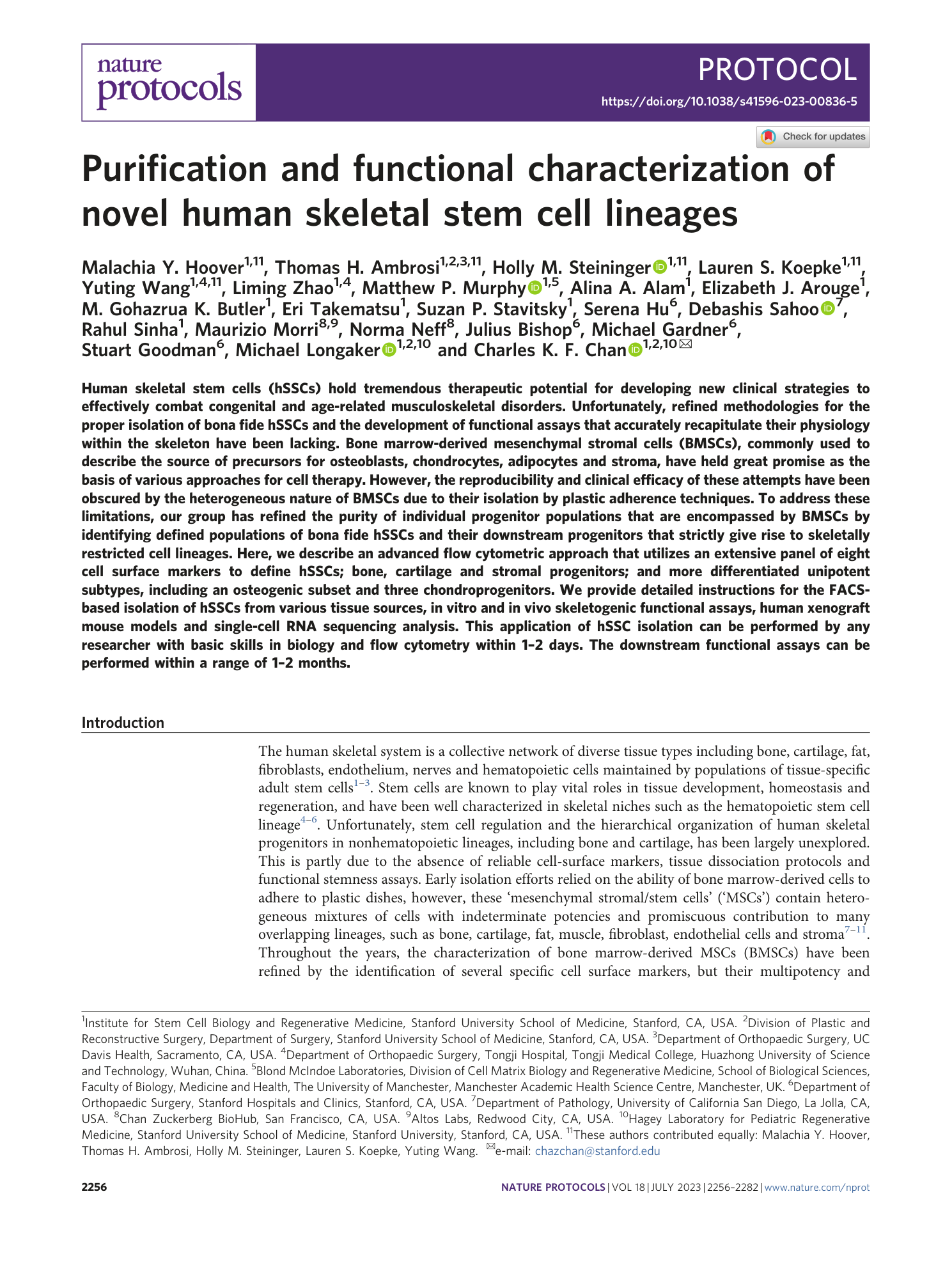
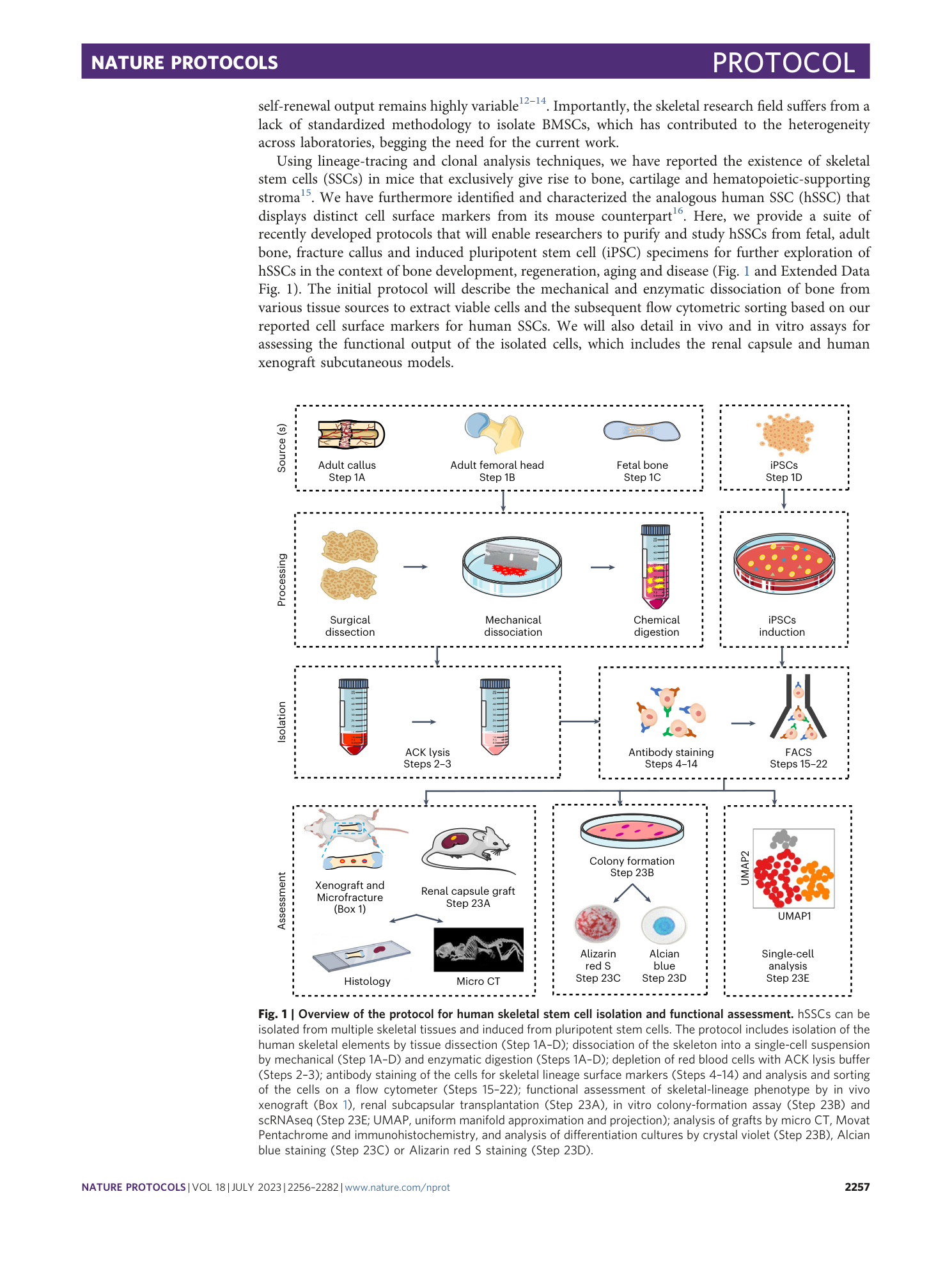
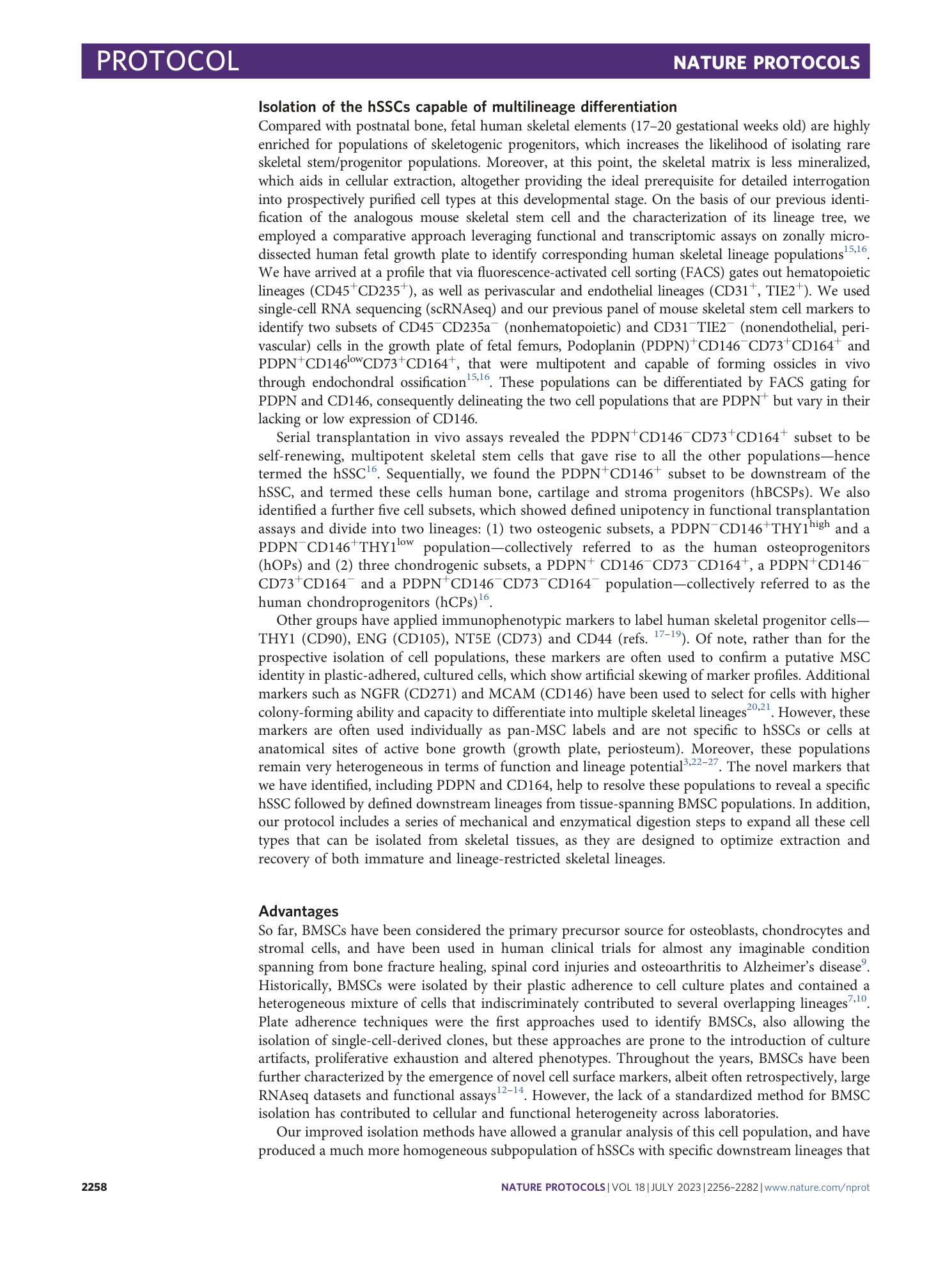
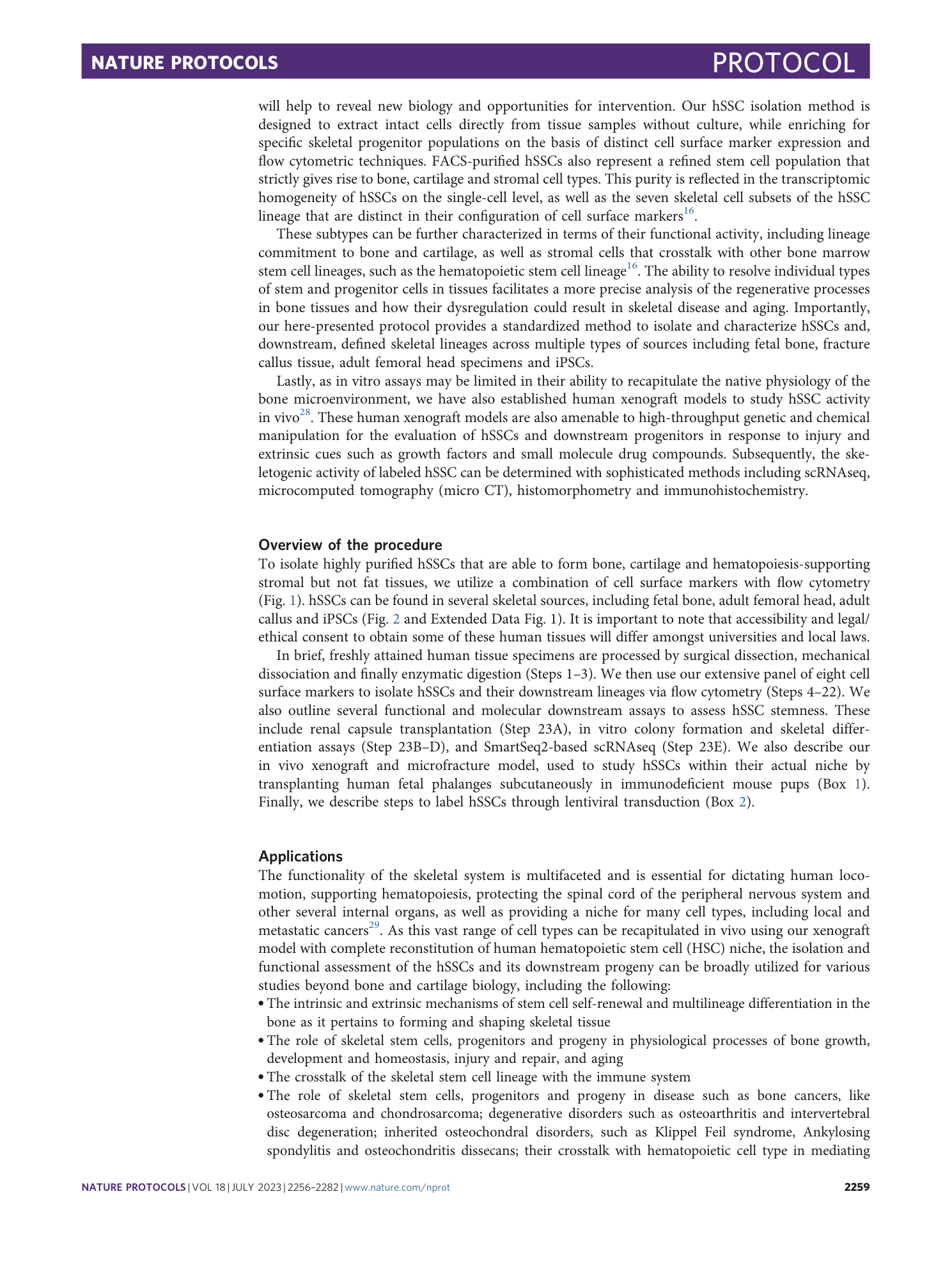
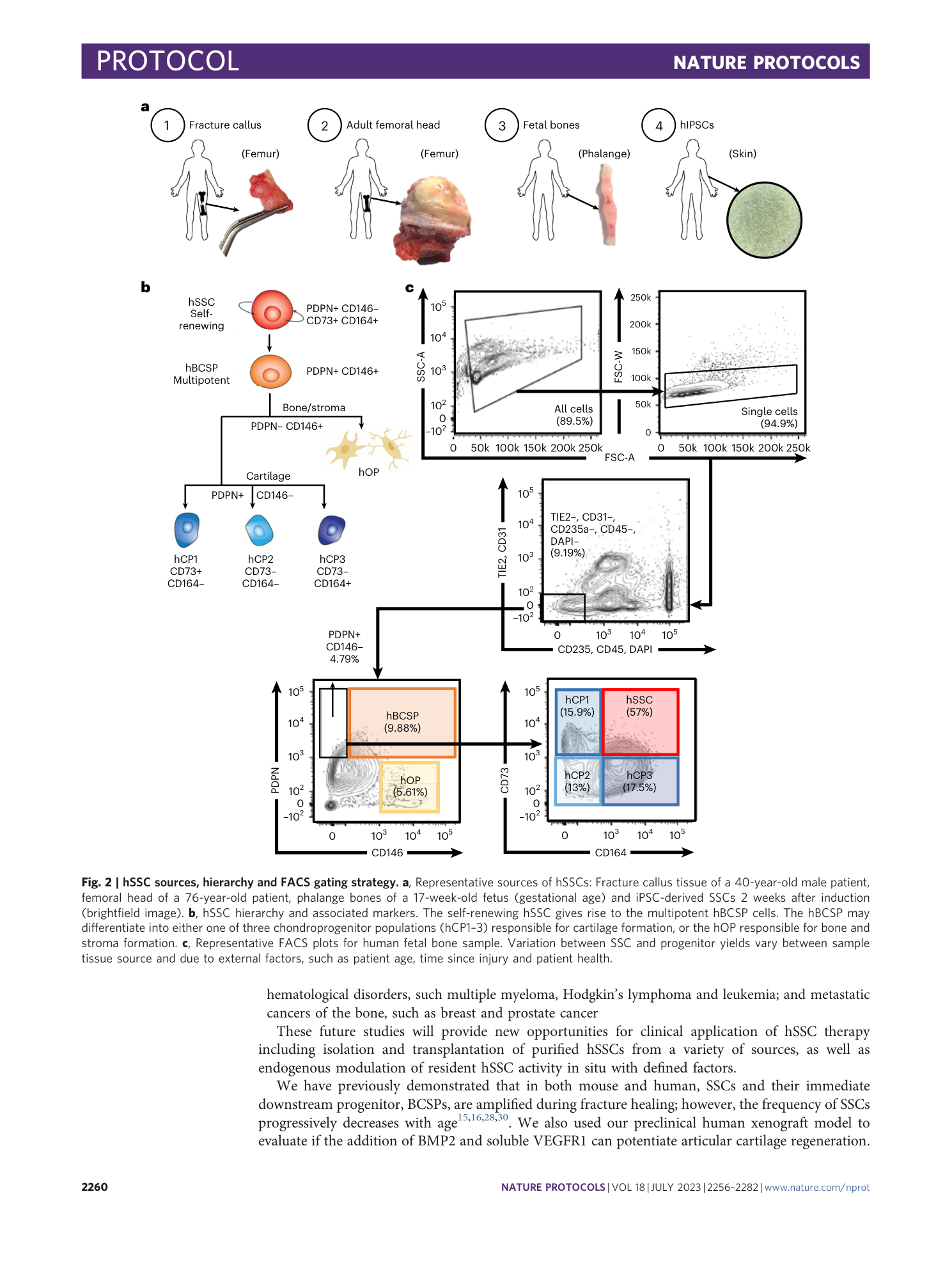
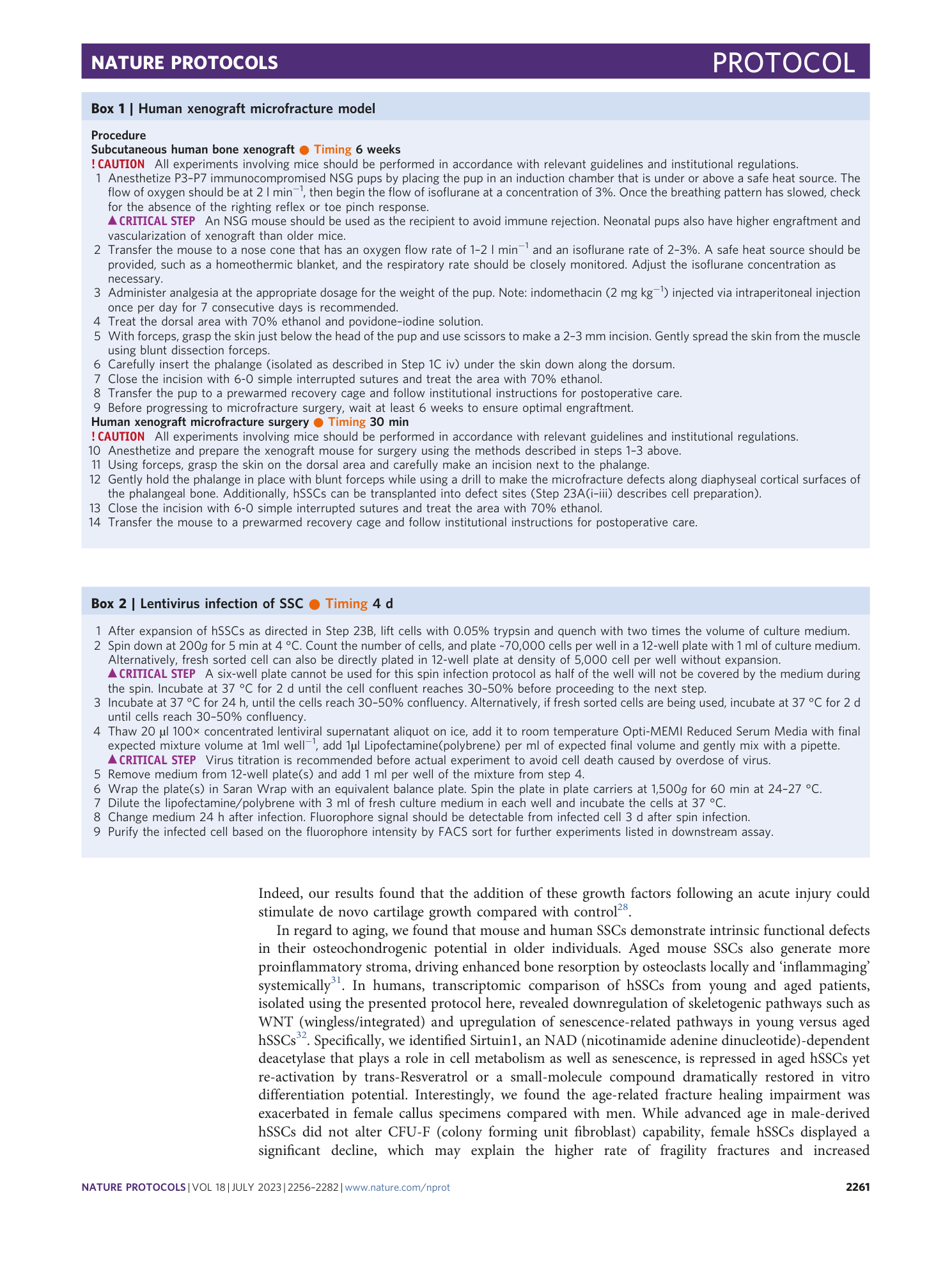
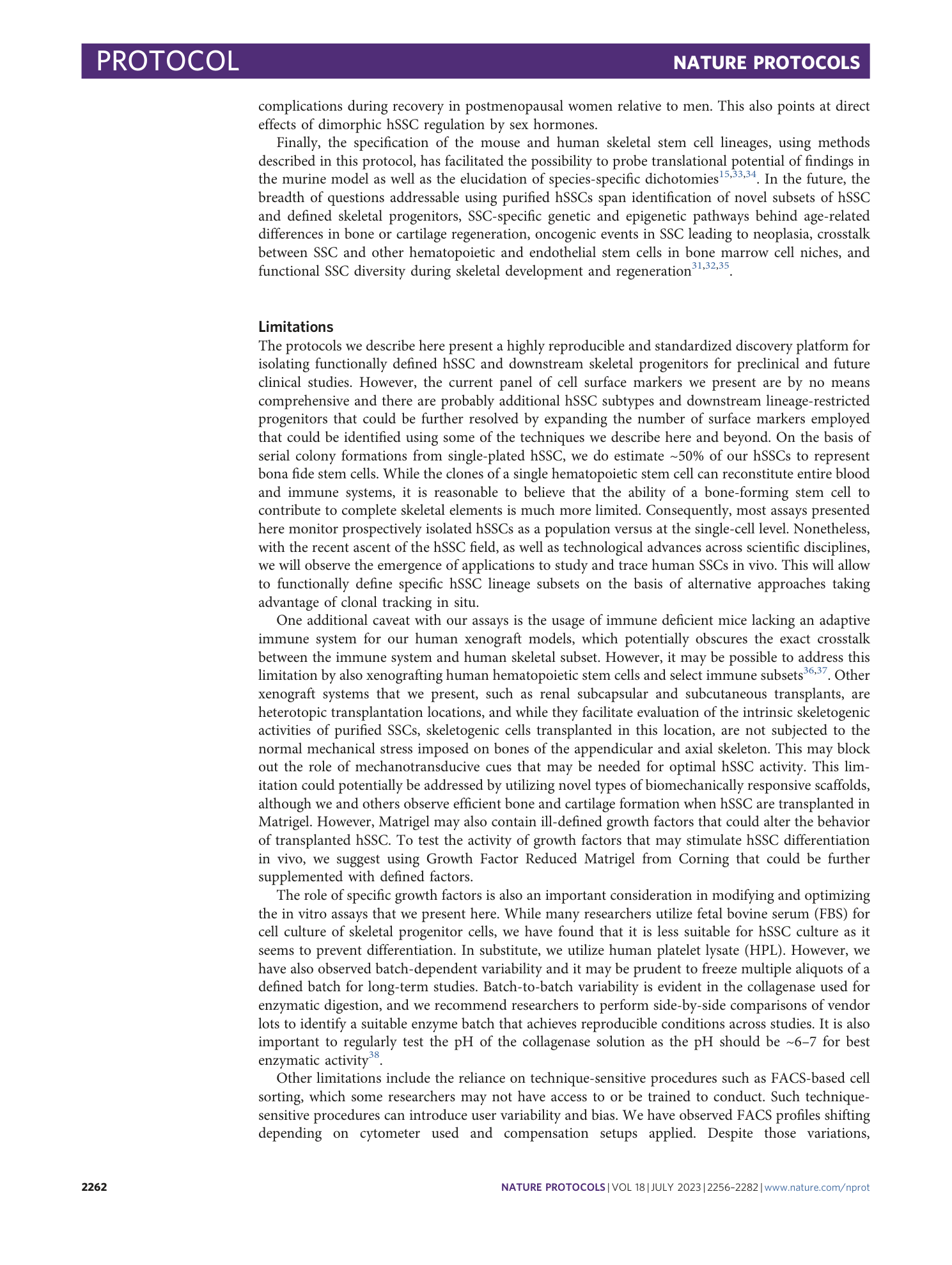
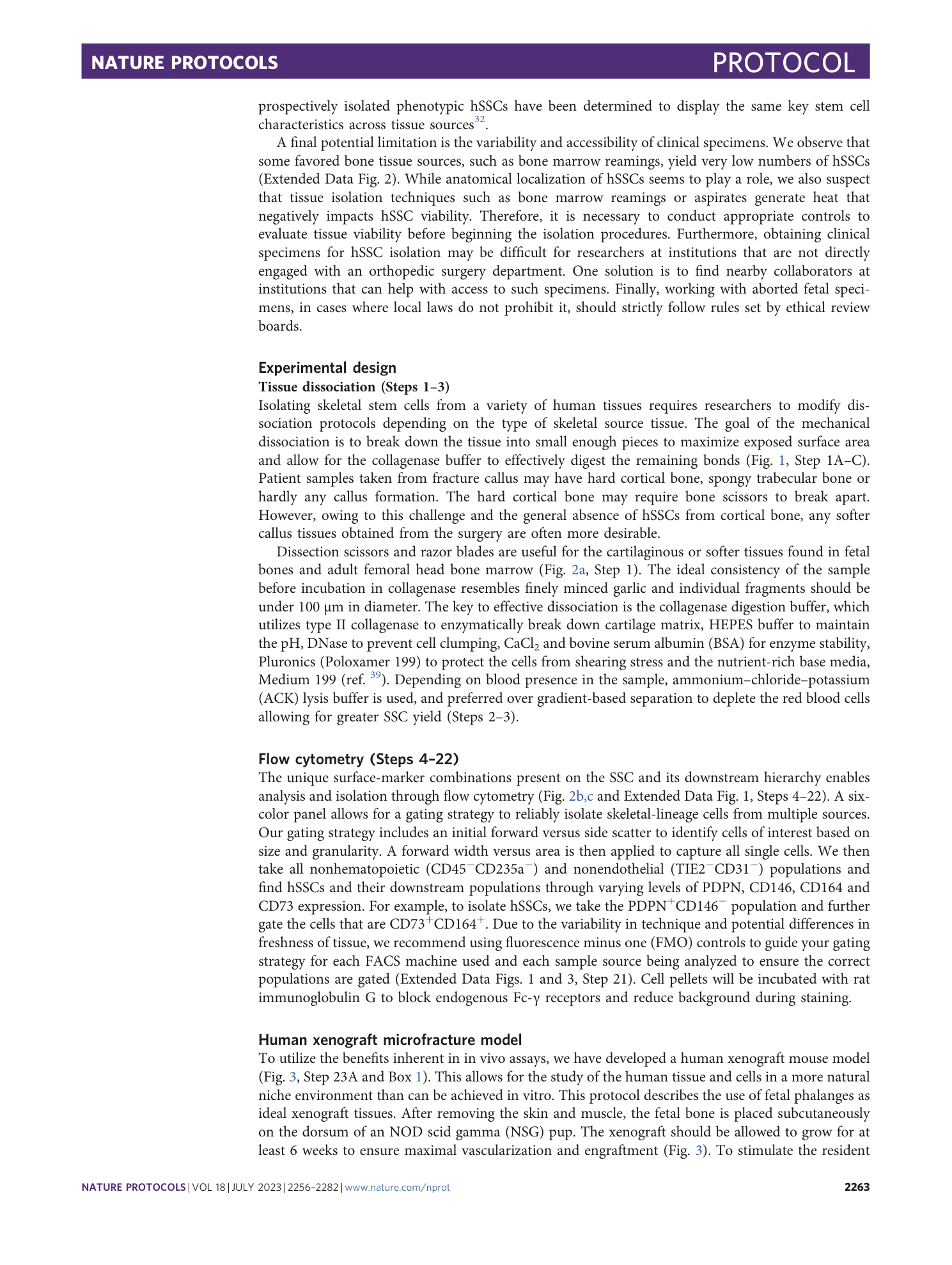
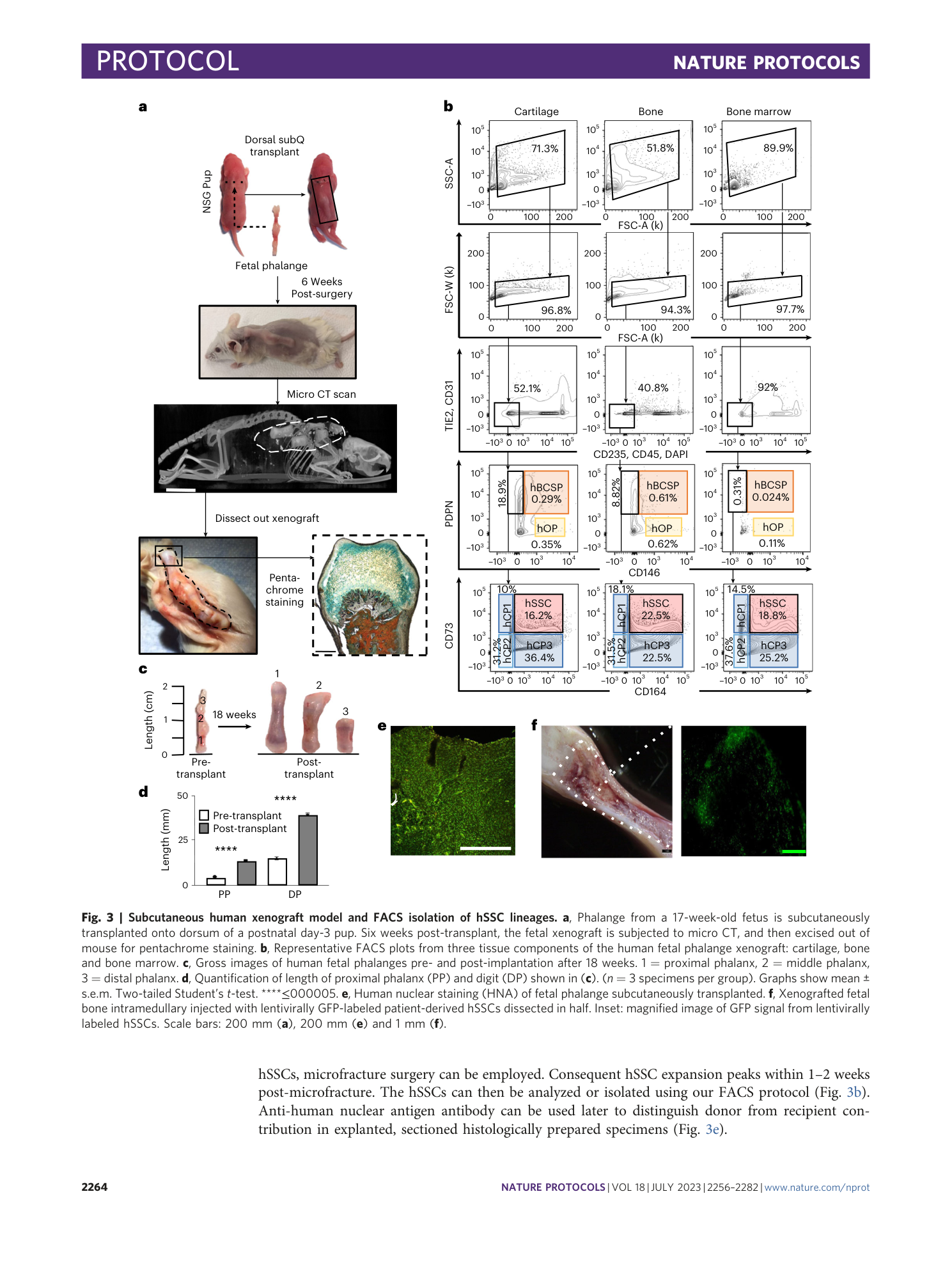
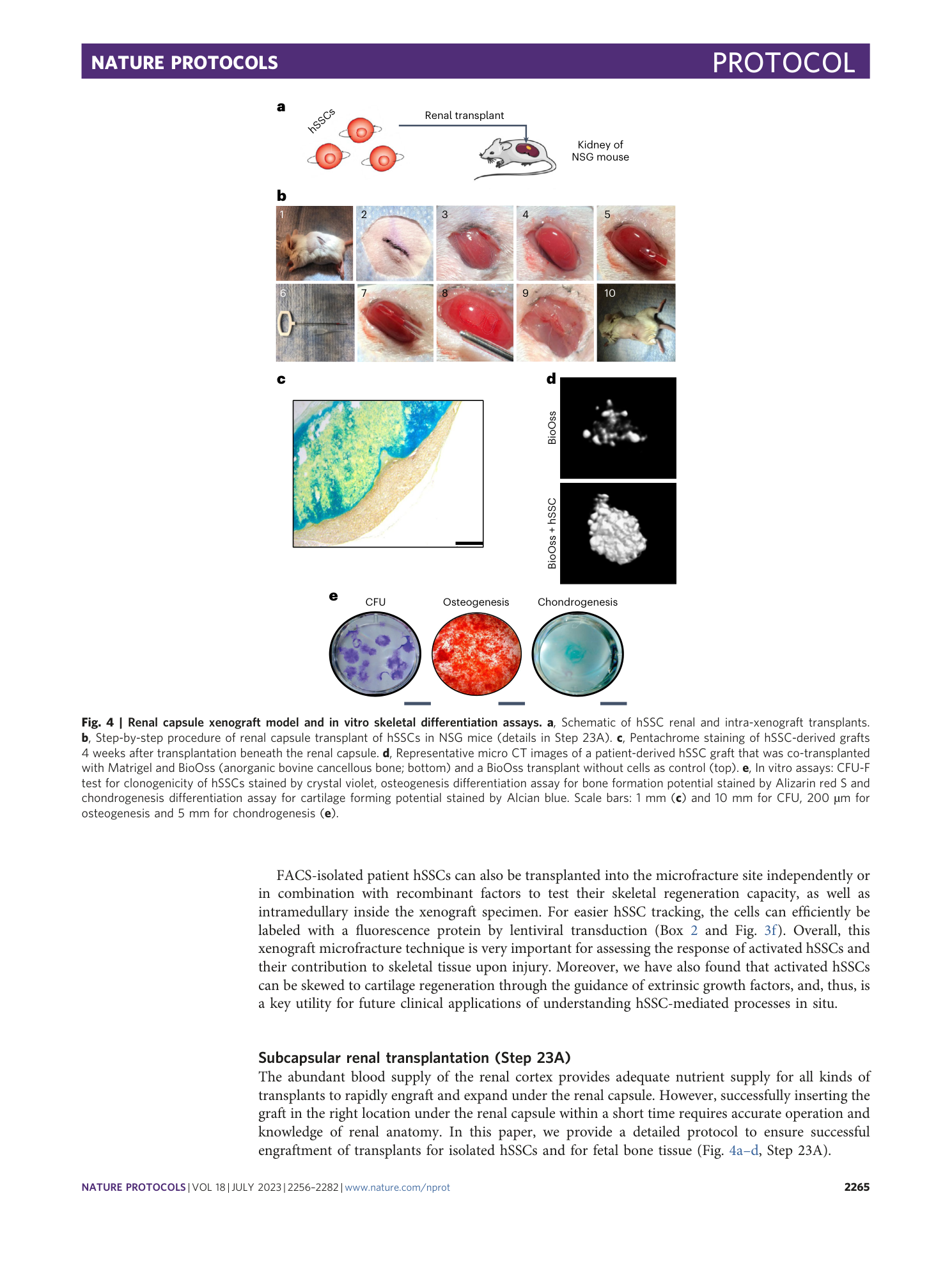






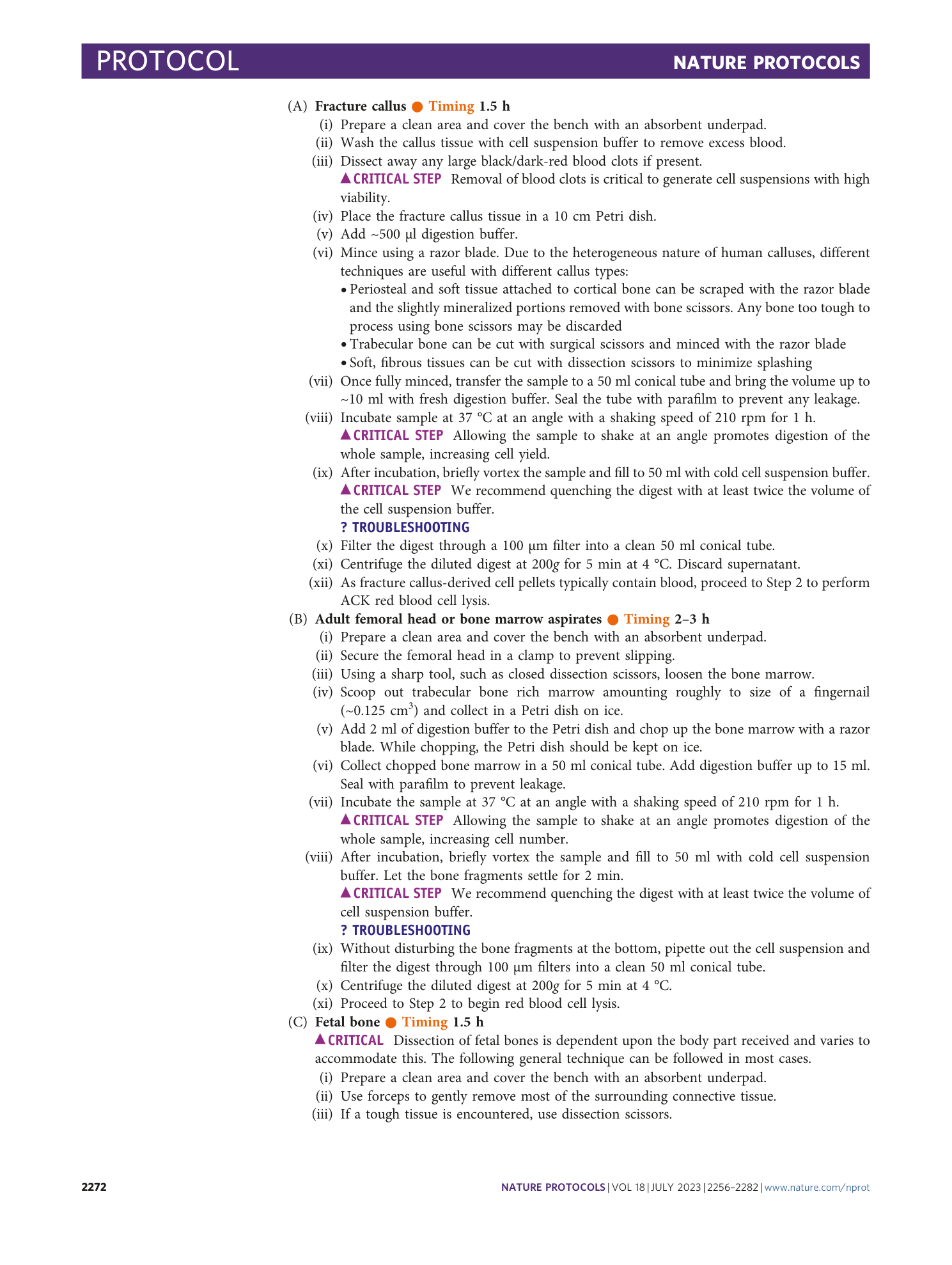
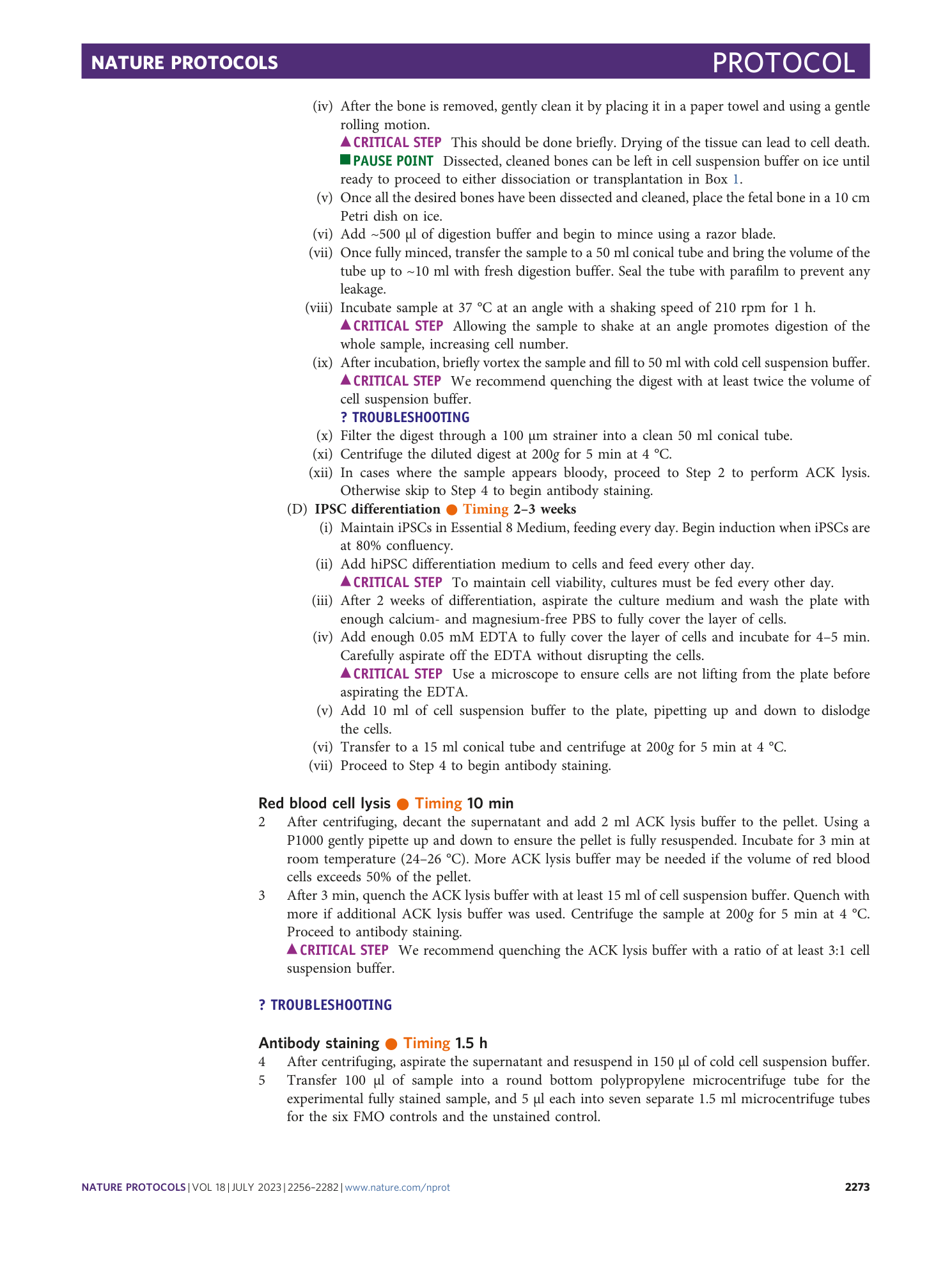
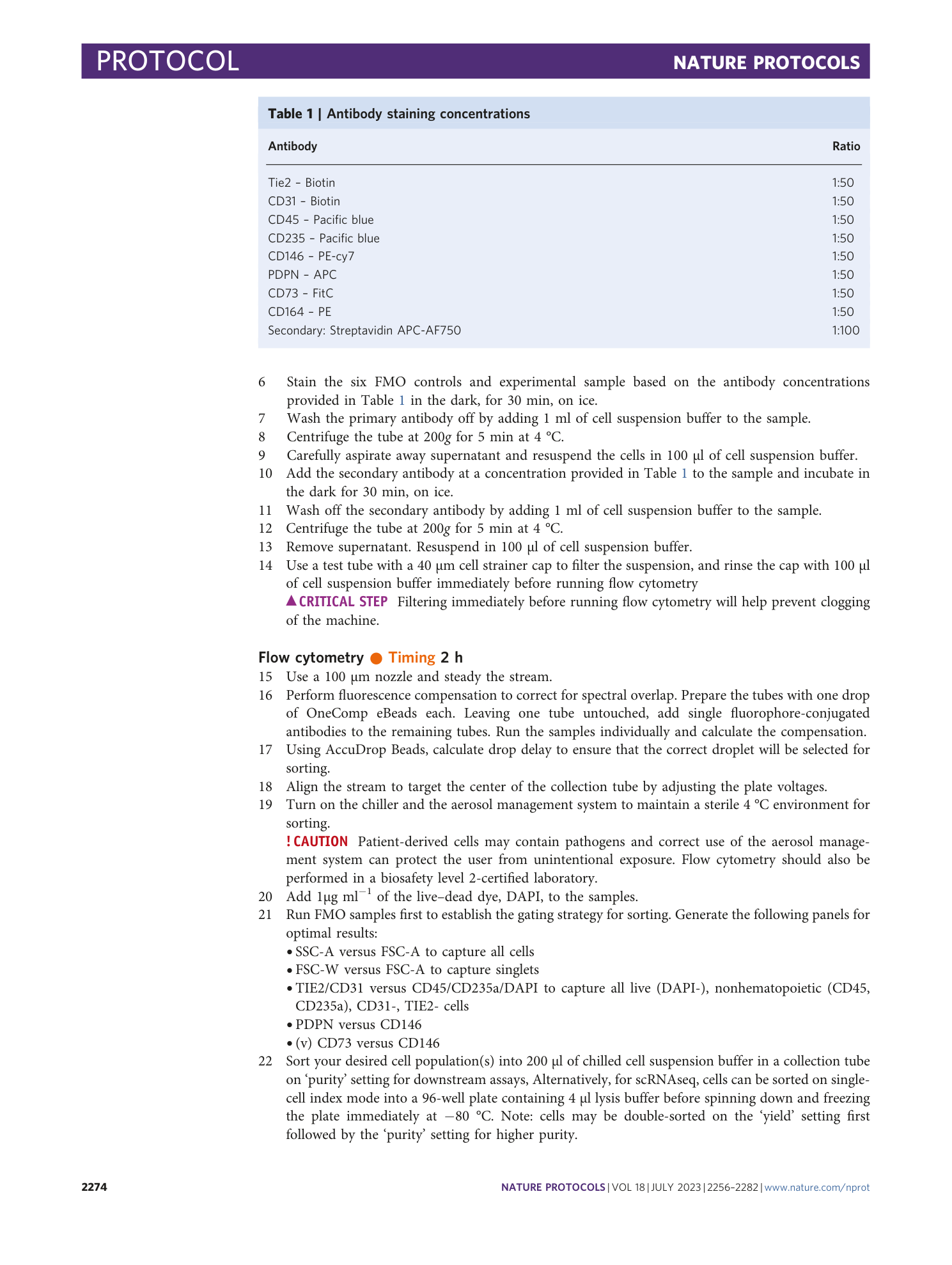


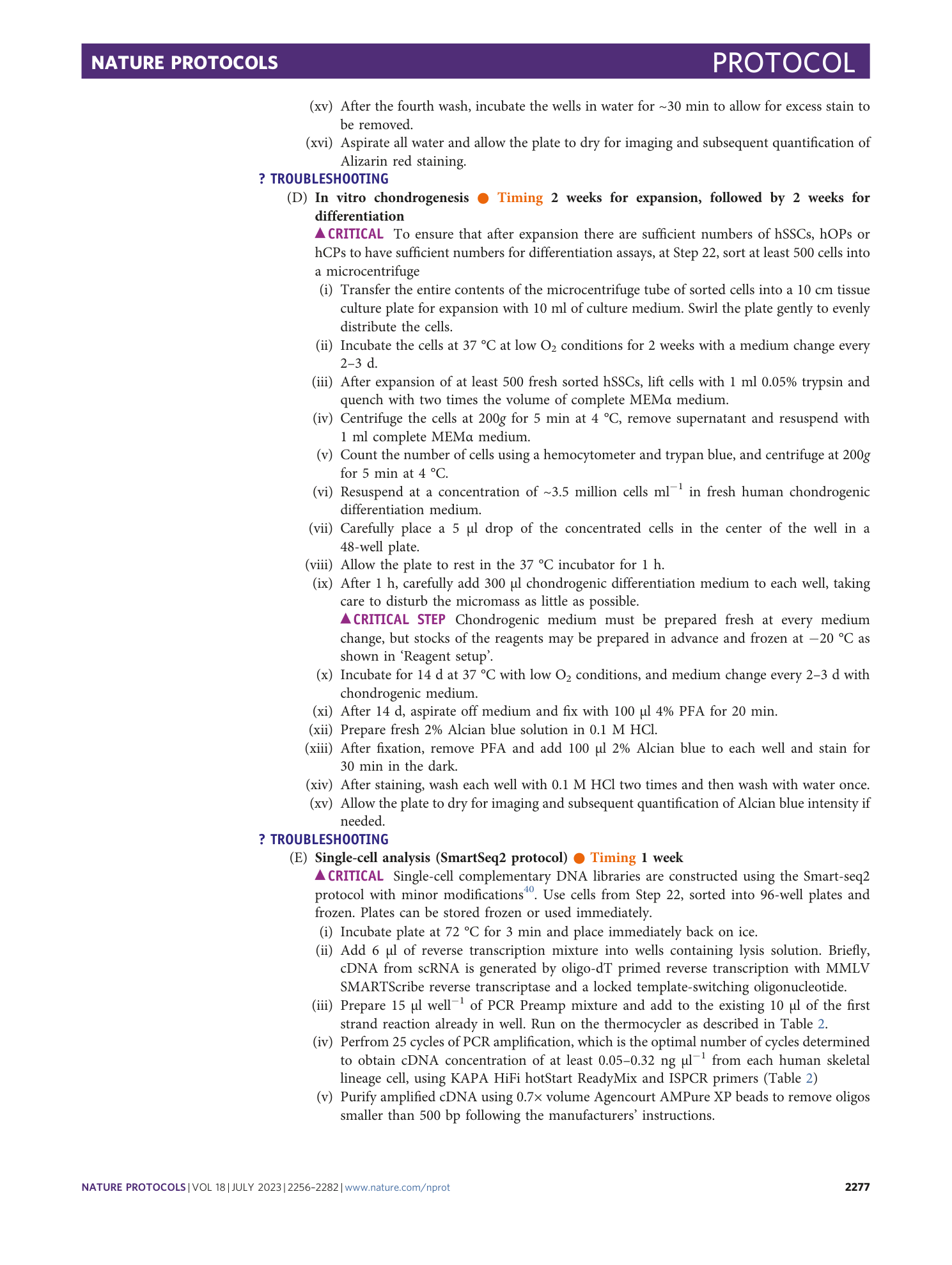
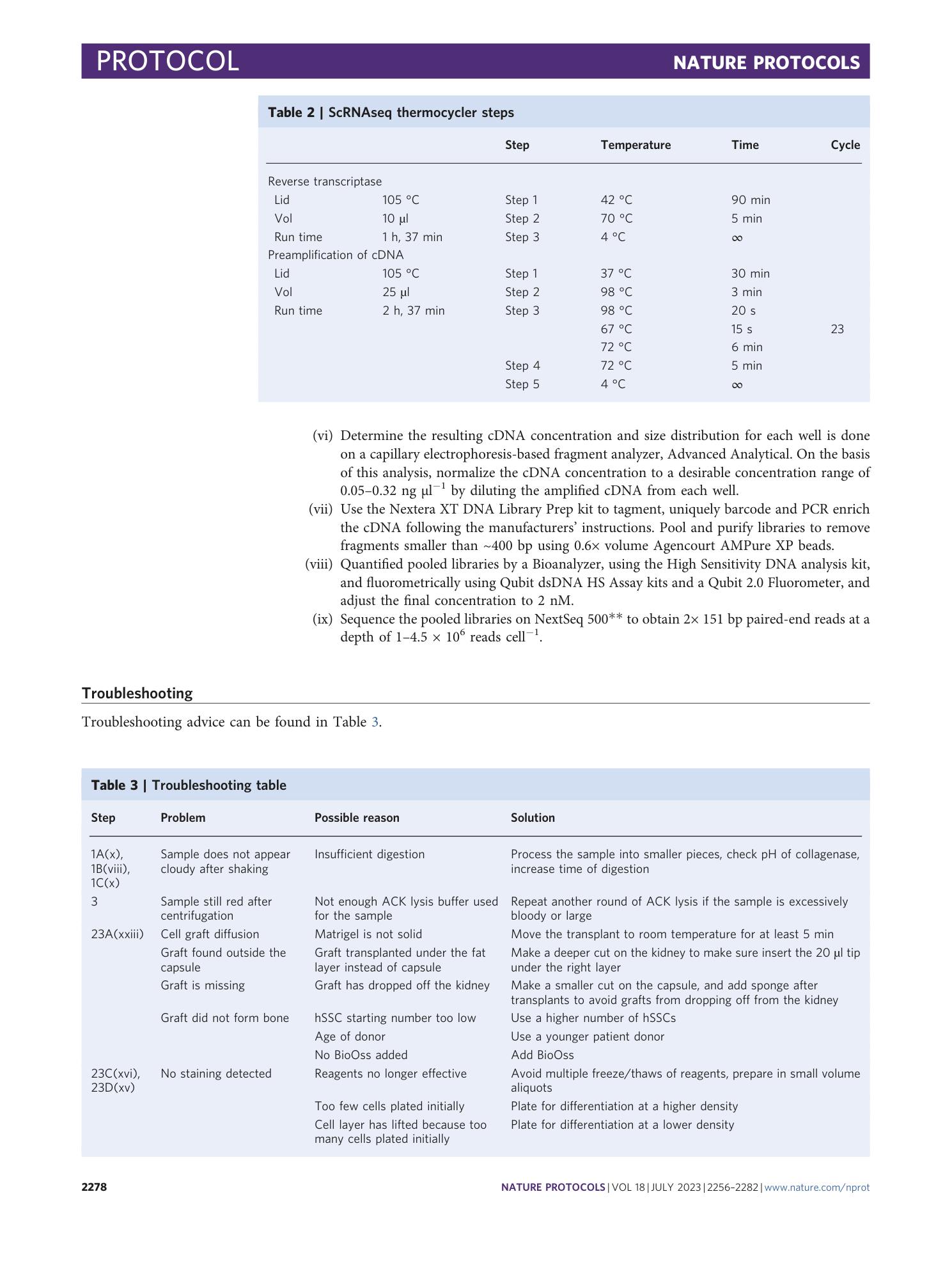
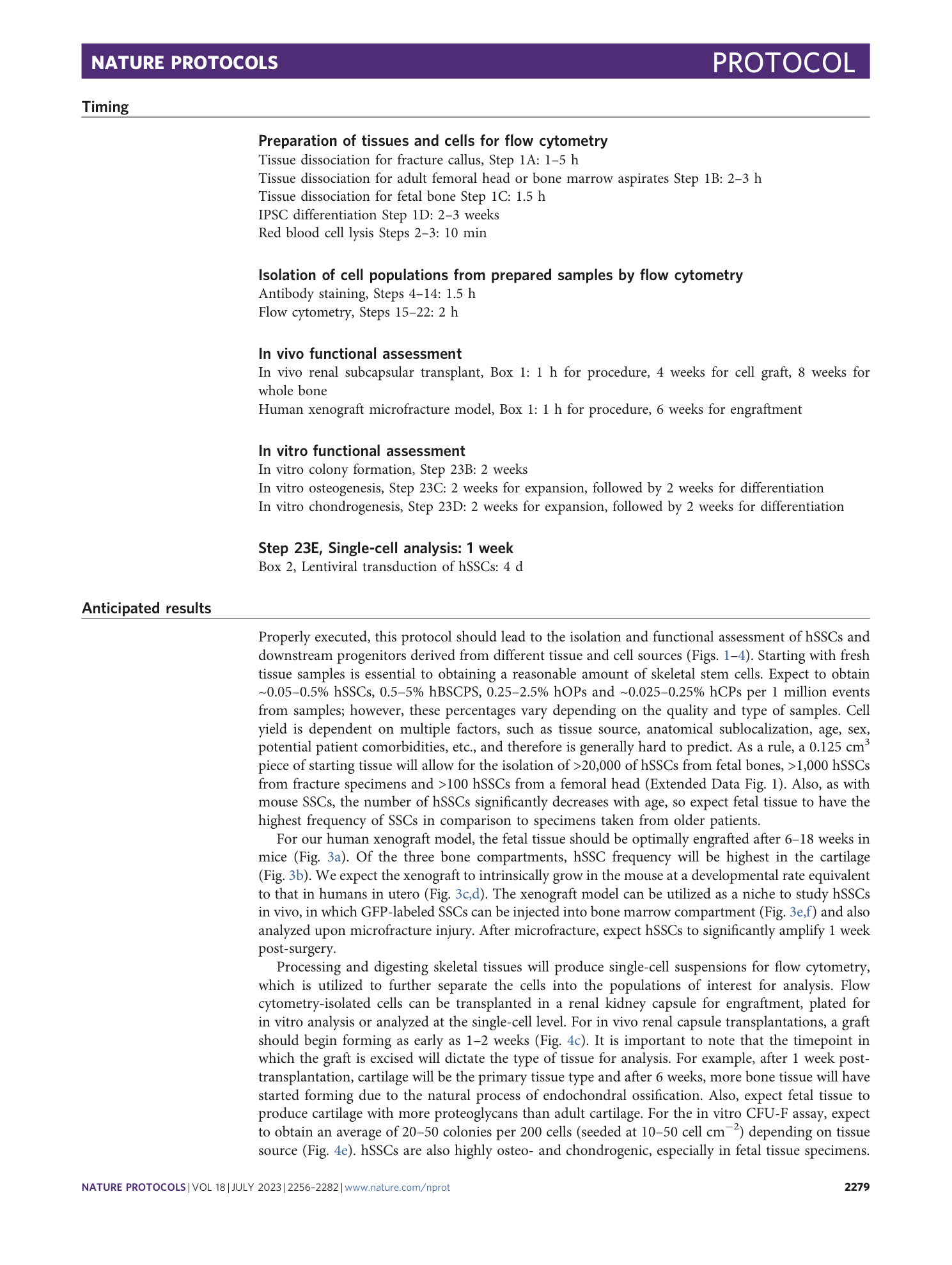
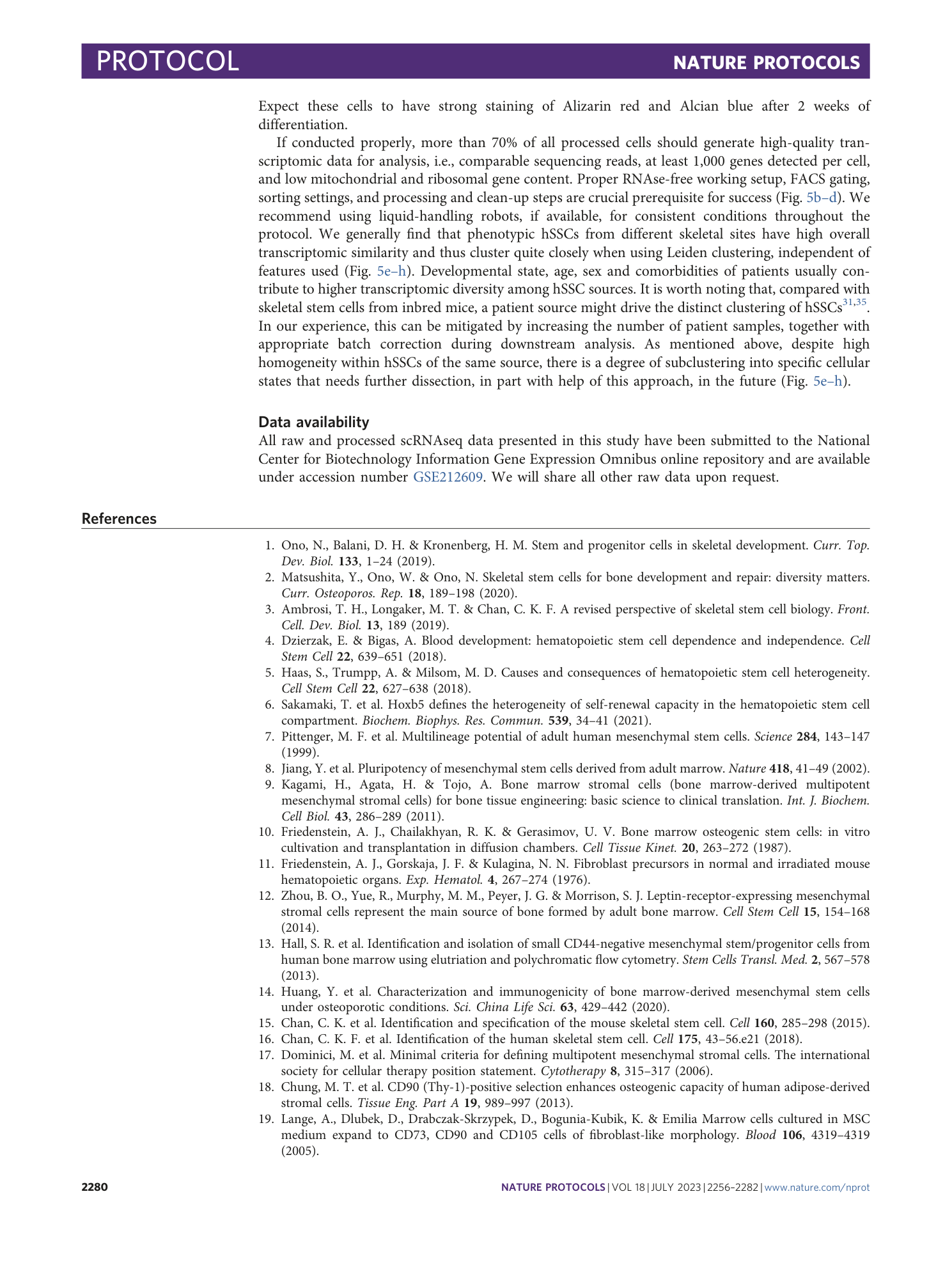
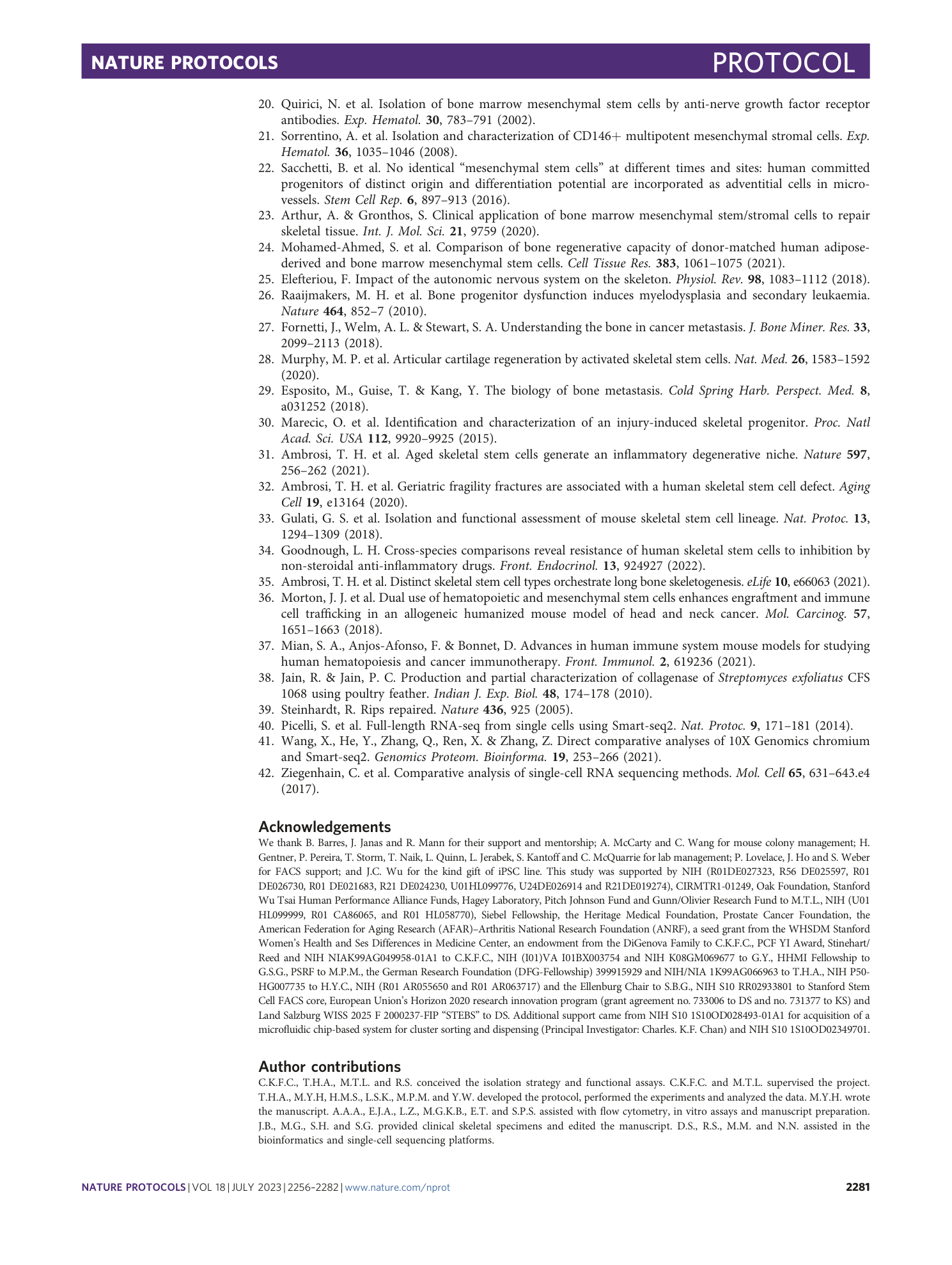
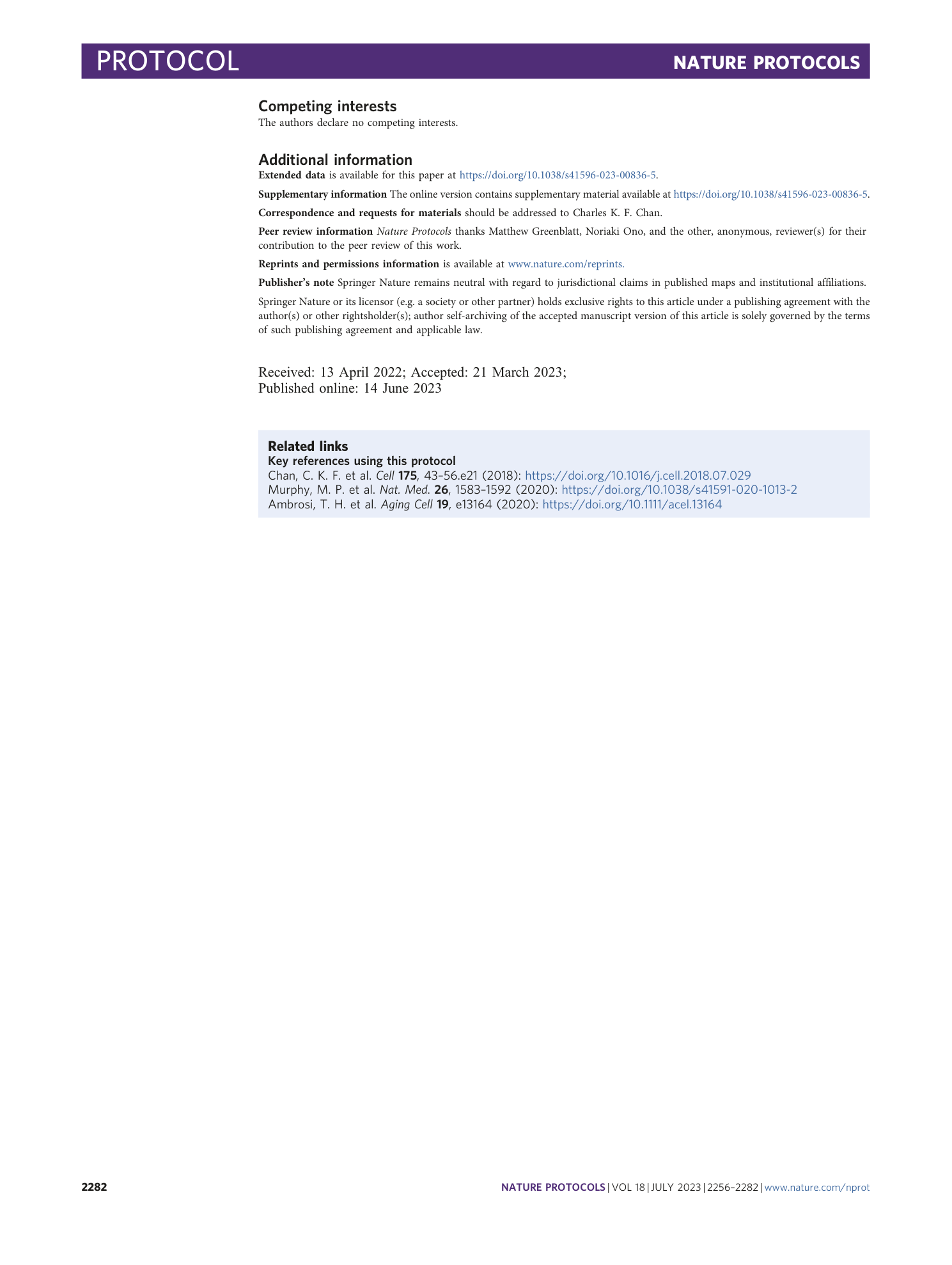
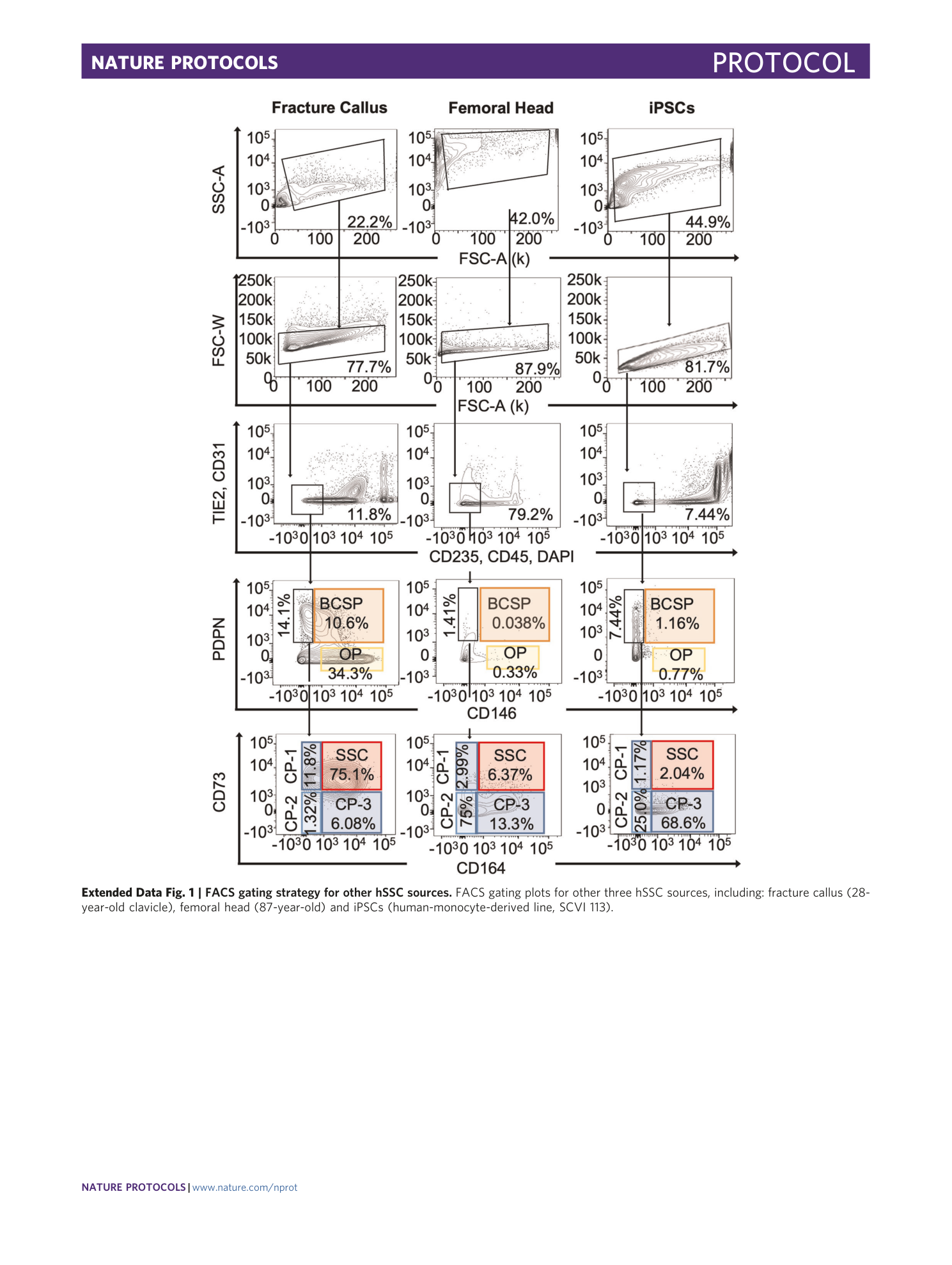

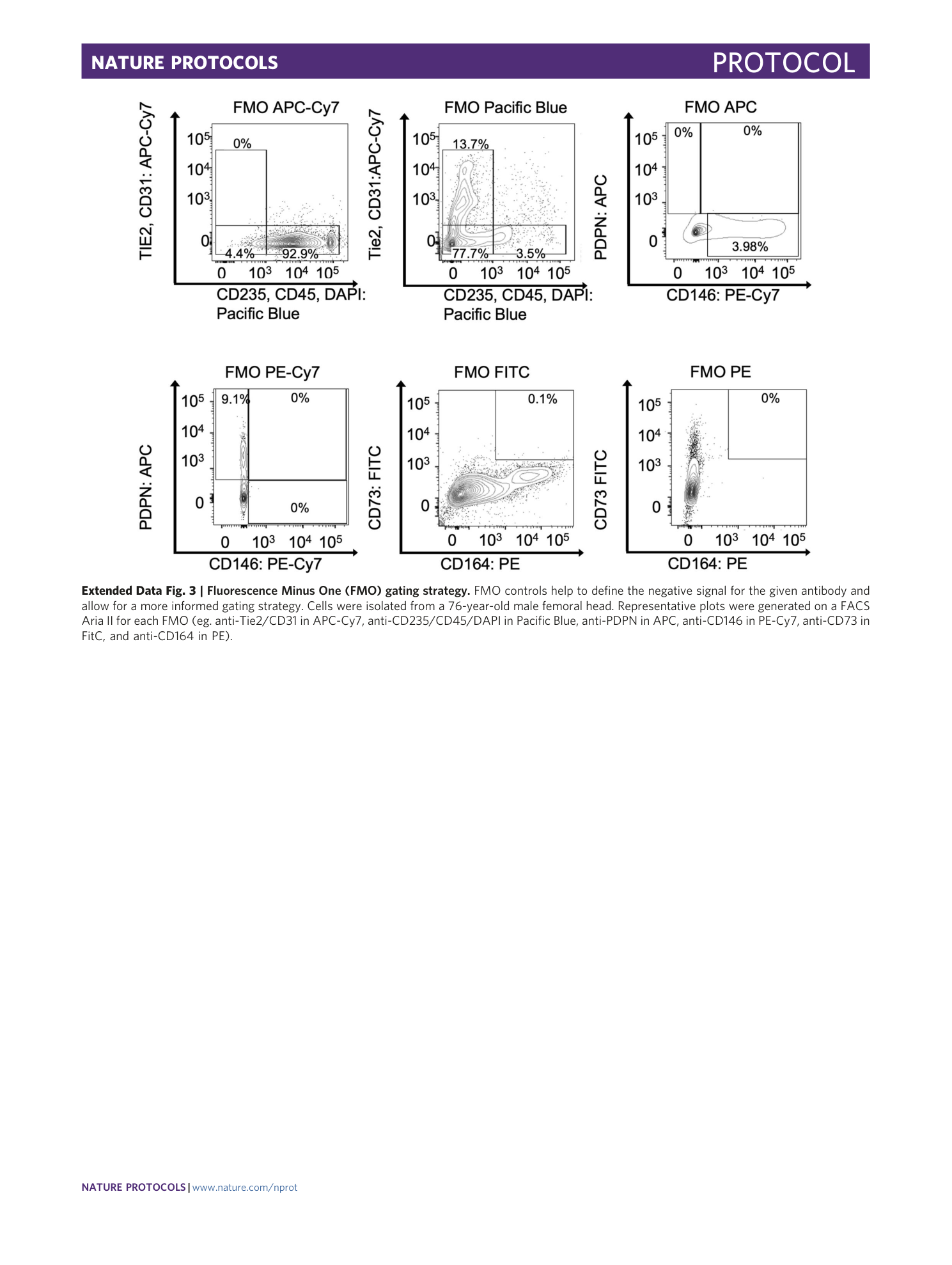
Extended
Extended Data Fig. 1 FACS gating strategy for other hSSC sources.
FACS gating plots for other three hSSC sources, including: fracture callus (28-year-old clavicle), femoral head (87-year-old) and iPSCs (human-monocyte-derived line, SCVI 113).
Extended Data Fig. 2 FACS gating strategy for SSCs of bone marrow reamings.
FACS gating plots for SSCs collected from human bone marrow reamings of 22-year-old femur (top) and 87-year-old hip (bottom).
Extended Data Fig. 3 Fluorescence Minus One (FMO) gating strategy.
FMO controls help to define the negative signal for the given antibody and allow for a more informed gating strategy. Cells were isolated from a 76-year-old male femoral head. Representative plots were generated on a FACS Aria II for each FMO (eg. anti-Tie2/CD31 in APC-Cy7, anti-CD235/CD45/DAPI in Pacific Blue, anti-PDPN in APC, anti-CD146 in PE-Cy7, anti-CD73 in FitC, and anti-CD164 in PE).

